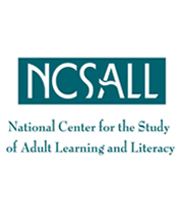The introduction of multiple intelligences theory (MI theory) in 1983 generated considerable interest in the educational community. Multiple intelligences was a provocative new theory, claiming at least seven relatively independent intelligences, in marked contrast to the traditional view of a unitary, “general” intelligence (Gardner, 1993a). Because multiple intelligences theory was intended for an audience of psychologists, Gardner’s introduction to MI theory, Frames of Mind (1993a), had little to say about classroom application. Yet, it has been enthusiastically received by many educators who are aware of the many different “smarts” their students bring to the classroom. They are drawn to MI theory because it supports pedagogy and approaches such as whole language and cooperative learning. As a formal theory based on empirical research, it validates what teachers already know and do when they use diverse classroom practices.
The efforts to apply MI theory that have been documented by Gardner and others have been at the preK-12, primarily preK-8, level. Until late 1996, the adult literacy field had not engaged in a systematic application of MI theory. Adult literacy students, perhaps more than any others, suffer from the consequences of unidimensional views of intelligence, which translate into uniform instructional and assessment approaches that favor logical and linguistic skills. Traditional approaches may have failed to reach and teach many adults when they were children.
In light of the positive experiences with MI theory at the preK-12 level, together with the promise it holds for our field, the AMI Study was conceived. The AMI study is a collaboration between Harvard Project Zero and the New England Literacy Resource Center (NELRC)/World Education under the auspices of the National Center for the Study of Adult Learning and Literacy (NCSALL) at Harvard Graduate School of Education.
The AMI study addresses the question, “How can Multiple Intelligences (MI) theory support instruction and assessment in Adult Basic Education (ABE), Adult Secondary Education (ASE) and English for Speakers of Other Languages (ESOL)?” This study is the first systematic, classroom-based research of MI theory in different adult learning contexts.


